The white apricot blossom, or hoa sưa trắng, is a flower that holds a special place in the hearts of Vietnamese people. In this article, we’ll explore the unique characteristics, significance, and legends surrounding this enchanting flower.
1 Introduction to the White Apricot Blossom
 The White Apricot Blossom, a Delightful Sight
The White Apricot Blossom, a Delightful Sight
Known by various names such as trắc thối, huê mộc vàng, and sưa bắc bộ, the white apricot blossom is a true beauty. In some regions, it is affectionately called sưa hoa trắng, or given the more elegant moniker of hoàng hoa lệ or hoàng hoa lý.
Belonging to the legume family, this flower boasts the scientific name Dalbergia Tonkinensis. You’ll commonly find this tree in Vietnam and parts of Hainan, China, where it has graced the lands since ancient times, thriving in tropical forests.
The white apricot blossom tree thrives in sunlight and moist, fertile soil. It grows rapidly, producing an abundance of fragrant flowers. The tree’s trunk is highly valued for its use in crafting various objects and furniture, providing economic benefits to local communities.
2 Characteristics of the White Apricot Blossom
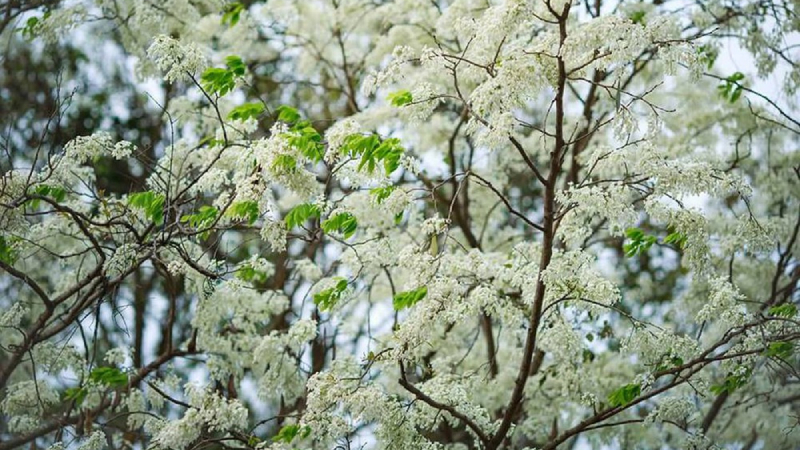 Unveiling the Unique Traits of the White Apricot Blossom
Unveiling the Unique Traits of the White Apricot Blossom
Reaching heights of 6 to 12 meters, with some trees even towering up to 15 meters, the white apricot blossom is a majestic sight. It is a woody tree with a moderate growth rate, featuring numerous young branches adorned with fine, sparse hairs. The bark varies in color, ranging from yellow-brown to gray, and develops longitudinal cracks as the tree ages.
The leaves of this tree are pinnately compound, resembling a feather, and arranged alternately on the branches. Each leaf comprises 9 to 17 leaflets, which are ovate-lanceolate with a rounded base. The upper surface of the leaf is green, while the underside is white. Each leaflet measures approximately 3 to 5 centimeters in width and 6 to 9 centimeters in length, with the basal leaflets being the largest. Notably, the leaf stalks, blades, and stipules are devoid of hairs.
The delicate white apricot blossoms emerge from the leaf axils, with buds appearing before the leaves fully develop. The flowers are predominantly white, growing in graceful clusters and exuding a subtle fragrance. Blooming typically occurs from February to April, with the peak in April, when the trees are enveloped in a blanket of white, creating a breathtaking sight against the sky.
The white apricot blossom bears a resemblance to pea flowers but with a gentler scent. As the flowering season concludes, the tree bears fruit in the form of elongated, flattened eggs, containing one or two seeds.
3 Significance of the White Apricot Blossom
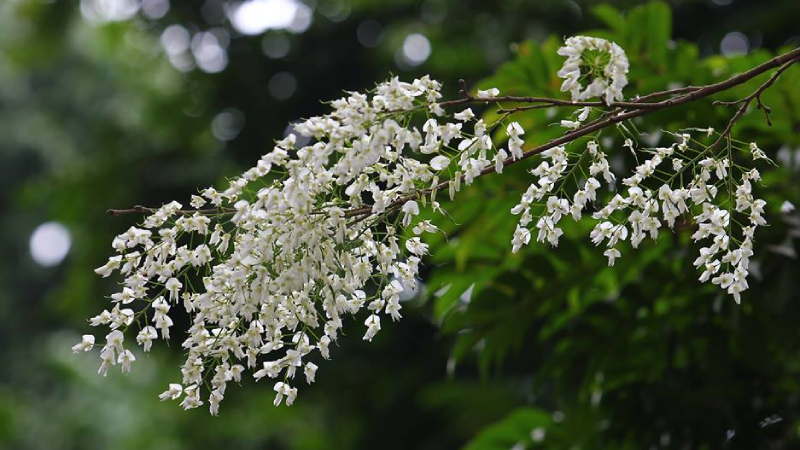 Unraveling the Symbolic Meaning of the White Apricot Blossom
Unraveling the Symbolic Meaning of the White Apricot Blossom
The white apricot blossom is not just a pretty face—it also serves a functional purpose. Its sparse canopy adds beauty to streets and provides shade for passersby. Additionally, this tree possesses air-purifying properties, making it a welcome addition to public spaces and sidewalks. Its deep-rooted system also makes it ideal for soil conservation in protective forests.
Beyond its practical benefits, the white apricot blossom holds symbolic significance, particularly in the realm of love. It represents unwavering devotion and undying love, making it a fitting emblem for those who wish to express their eternal commitment.
The wood of the white apricot blossom tree, when burned, emits a foul odor, hence the name trắc thối. However, its wood also possesses a fragrance reminiscent of agarwood, adding to its allure.
4 Uses of the White Apricot Blossom
 Discovering the Multifaceted Uses of the White Apricot Blossom
Discovering the Multifaceted Uses of the White Apricot Blossom
The white apricot blossom is more than just a pretty flower—it has a multitude of uses that you may not be aware of:
- In the past, the wood of the white apricot blossom tree was used to craft high-quality wooden iceboxes due to its beautiful grain and smooth texture.
- During the 1990s, the wood was sought after by the Chinese to create coffins for emperors, as they believed it slowed down the decomposition of the body.
- In traditional medicine, the white apricot blossom is prized for its medicinal properties, including its ability to fight bacteria, treat malaria, and even prevent cancer.
- Today, the wood is used to create religious artifacts, furniture, and other decorative items.
However, due to overexploitation, the white apricot blossom tree is now on the list of protected species, emphasizing the need for conservation efforts.
5 Best Places to Admire the White Apricot Blossom in Hanoi
Address: Hanoi
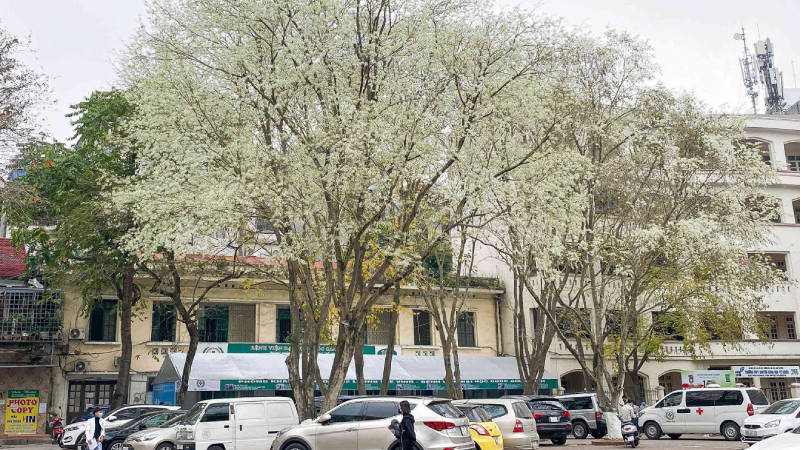 A Burst of White Apricot Blossoms Along Thanh Nien Road
A Burst of White Apricot Blossoms Along Thanh Nien Road
 White Apricot Blossoms Amidst the Bustling City
White Apricot Blossoms Amidst the Bustling City
Address: Hanoi
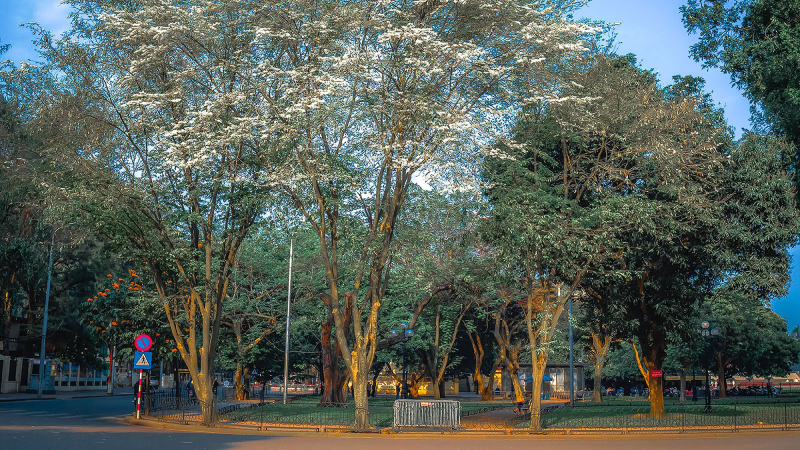 White Apricot Blossoms Providing a Shady Canopy
White Apricot Blossoms Providing a Shady Canopy
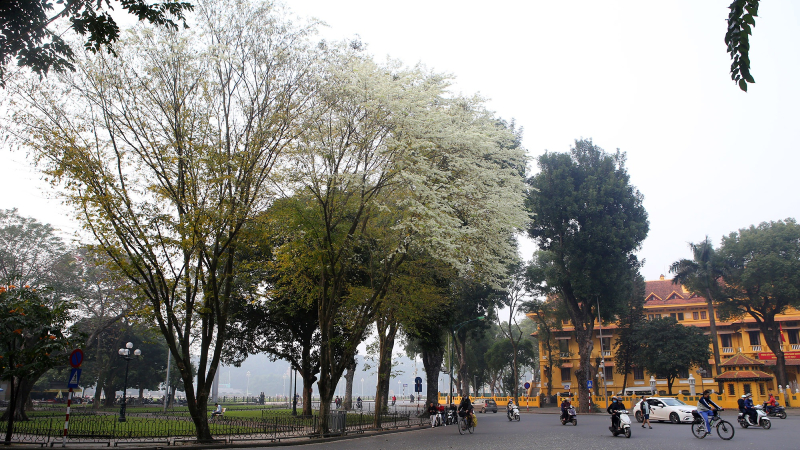 A Sea of White Blossoms Against the Hanoi Skyline
A Sea of White Blossoms Against the Hanoi Skyline
Now you know the secrets of the white apricot blossom—its characteristics, significance, and the legends that surround it. We hope this article has enriched your understanding of this beautiful flower and inspired you to appreciate its beauty and importance.


































